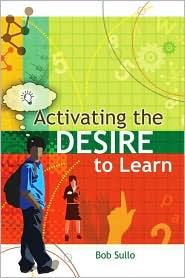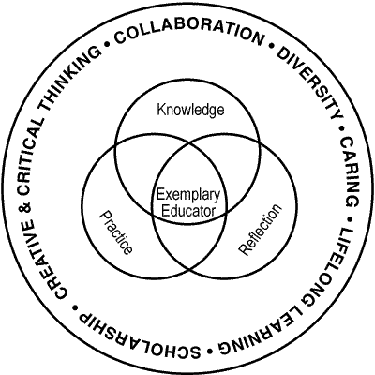Activating Desire (2)

Be a Leader, Not a Visionary
As a teacher, it’s easy to develop a vision of what your classroom should look like. The problem with visions is that they have a well-defined picture of quality that demands to become reality. The visionary becomes a delegator who assigns tasks so that the vision can become a reality.
The best kinds of teachers are leaders, not delegators. Leaders show students the way. Delegators tell students to follow the path. Leaders view learning as a journey, while delegators focus on the destination, the end game of passing test scores. Leaders leave room for creativity and flexibility, while delegators often have a ‘do it this way’ mantra.
There is a big difference between wanting to be a leader and actually being a leader. Every good teacher wants to be a leader. But how often do teachers resort to what’s easy? And let’s face it. It’s easier to tell people what to do than to inspire them so they want to do it. It’s much easier to sit behind the desk while the students do the assignment from the board. And it’s definitely easier to make the lesson plan by yourself than to ask for the students to help you plan the journey together.
I’m not saying it’s wrong to design great lesson plans and have the students do the work. Without great lesson plans, learning is mediocre at best. But there’s something powerful about collaborating. The best teachers know that cooperative learning is effective. When students work together, they learn valuable social skills for life. Cooperative learning supports visual, auditory, and kinesthetic learners. They get to enjoy learning in a social environment and get ready for the real world, where collaboration and cooperation are part of life.
The difference between cooperative learning and regular old group learning is in the structure. With a group, there are no roles and no boundaries. One student can do all the work for the other two members of the group, and quite possibly be the only one who gets anything out of the lesson. Satisfaction is not guaranteed.
With cooperative learning, there are roles. The work is divided up into tasks for each member of the group. If one member doesn’t do their share, the group fails. The work is assessed, and ideally, only quality work is accepted. The students depend on each other and learn from each other.
There are many roles in cooperative learning. These roles include recorder, timer, encourager, reader, ‘go-fer,’ artist, proofreader, checker, and task monitor, the leader. There is the key word. Leader. In a true cooperative classroom, every student has a role every day, and the teacher is The Leader. The teacher monitors the class, not runs the class. And in order to lead the students effectively, The Leader needs to give the students the ability to self-monitor. The best way to do this is through general descriptors of quality, so the students know what is expected.
Some people might call it rules or expectations, but the key here is general. With vague expectations, students can add their own interpretations, creativity and flexibility to the work they do while still doing what the teacher expects. In this way, the teacher can become a leader instead of a delegator who runs everything. In this way, the teacher can show the students that they are respected and viewed as being capable and competent. The students become autonomous.
After much deliberation, I have identified five expectations that are general and will lead our students in the right direction. I want a classroom where we belong together at school, we care about each other, we work together collaboratively, we stretch and grow, and we value learning.
This is the beginning of making the switch from delegator to leader. Upon sharing these beliefs with students, teachers enter into a time of fostering community within the classroom. The next step is to nurture the community of learners with class meetings, working collaboratively with roles, and shared decision making.
These expectations may resemble a vision, and it may in fact be easy to continue to be a delegator even after changing expectations. Success hinges on the ability to remain enthusiastic without becoming overbearing. Focus on the students and not on the vision. Focus on the path, not on the destination. Focus on getting there together, as a community of learners.
How does this relate to internal motivation? When teachers lead rather than delegate, when they inspire with enthusiasm instead of force, coerce, or manipulate, and when they teach that there is not only one path to take, teachers begin to build strong relationships with their students. These relationships are necessary before internal motivation can be successful.




